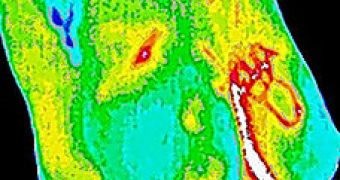In Europe, diseases steal annually 500 million workdays. Decreased productivity and high medical costs are paid by all of us. And do not believe that only in developing countries people do not have access to medical care: 46 million people in US do not have medical insurance. Science fights hard to eradicate infectious diseases and massive campaigns of immunization are led in developing countries against diseases like TBC, diphteria, tetanos, convulsive cough, measles, chicken pox, yellow fever, influenza virus type B, hepatitis B, polio, rotavirus, Pneumococcus, meningitis and Japanese encephalitis. Proper drinking water, diet and hygiene are promoted. And in an era of technology, this is how technological advances help:
1.The X ray imagery. For over 30 years, CT (computerized tomography) comes with tridimensional images of the human body, for diagnosing diseases or examining internal abnormalities. Now tomographs are faster, more precise and less costly than ever. The speed is essential for example when investigating the heart. As the heart beats continuously, many former images were not clear, being difficult to analyze. New CT devices scan your body in 0.3 seconds, much faster than a heartbeat, resulting clear images. CT scans also allow the examining of biochemical activities in some areas, useful in detecting early cancer. Still, there is some debate about the danger caused by the exposure to radiations.
2.Robotic surgery. Thousands of surgeries are performed annually using sophisticated robots. In some cases, surgeons operate trough a remote control type of device having various robotic arms, endowed with scalpels, scissors, video cameras, laser and other surgical tools. This technology allow surgeons to perform extremely complicated operations with maximum precision. This way pain, bleeding, complications, hospitalization period and recovery period are reduced to minimum.
3.Nanomedicine applies nanotechnology in medicine. Nanotechnology uses nanomaterials measured in nanometers (the billionth part of a meter). Just to understand this, a hair fiber has 80,000 nanometers, a blood red cell 2,500 nanometers, a bacterium 1,000 nanometers, a virus 100 nanometers and a DNA molecule is 2.5 nanometer thick. Nanomedicine aims at creating tiny devices for executing medical procedures inside the body, like transporting drugs directly to target cells, carrying oxygen to oxygen devoid tissues, removing obstructions of the blood vessels or protein plates from brain cells of senile patients. They would also kill germs, from viruses and bacteria to parasites. They could also detect early cancer, when the tumors are extremely small (and the treatment would induce weaker secondary effects). Some even dream on nanomedicine rebuilding cell molecular structures. These devices would be no larger than 100 nanometers and would be made of carbon or metals (like gold or platinum).
4.Genetics. We all have about 35,000 genes that dictate from how we function and our skills to our height, hair and eye color and so on. Many diseases have a genetic background. We may inherit defective genes, or we may be prone to conditions, or some toxic factors may alter our genes or gene activity. Each day, you read on science news how researchers have discovered new genes linked to diseases or vulnerability to them, and this explains why some react to a specific medication and others don't. This is a step toward personalized medicine, adapted to your genetics. Genetic predispositions could help detect severe diseases before they install. And the disease could even be avoided through diet, life style and preventive medication. This knowledge would also help doctors not to prescribe adverse medication.

 14 DAY TRIAL //
14 DAY TRIAL //